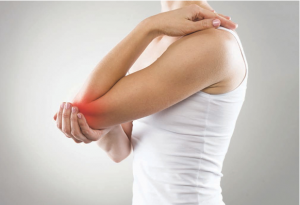Cascading relief: Laser therapy is better than dangerous drugs
 by Robert G. Silverman, DC, DACBN, DCBCN, MS, CCN, CNS, CSCS, CIISN, CKTP, CES, HKC, SASTM
by Robert G. Silverman, DC, DACBN, DCBCN, MS, CCN, CNS, CSCS, CIISN, CKTP, CES, HKC, SASTM
Too often, DCs see patients who have been prescribed powerful drugs to relieve the pain of joint and muscle injuries.
These drugs can often have dangerous side effects, including digestive upsets and even opening the pathway to addiction. Patients come to you because you offer a better, safer way to relieve this type of pain.
To meet their needs, consider adding low level laser therapy (LLLT) to your practice offerings. This approach uses light from a laser to relieve the under- lying inflammation that can cause pain, while also speeding the healing process.
Down the wrong path
When soft tissues such as muscles and tendons are injured, they release chemicals that set off the body’s natural inflammatory response. The area becomes red, swollen, warm, and painful. Icing, compression, and elevation can all help reduce inflammation, but these are basically first-aid approaches that are only helpful if applied immediately. Even when they are, inflammation and pain can persist for days or even weeks after an injury.
Drugs such as steroids (cortisone), powerful nonsteroidal anti-inflammatories (celecoxib, naprosyn, and similar drugs), and pain medications (opioids) can help, but the risks often outweigh the benefits. People with diabetes, for instance, can develop dangerously high blood sugar from steroids.
And prescription nonsteroidal anti- inflammatory drugs are notorious for causing stomach bleeding and even heart attacks. In addition to their potential for accidental overdose and addiction, opioids can cause sedation and depression.
The better route
Why take dangerous drugs when a safe and effective alternative is available? Laser light delivered directly to the area in and around an injured joint can be helpful for not just relieving pain but also actively promoting the healing process. The laser reduces inflammation, provides deep tissue therapy, improves blood flow to the area, and accelerates pain relief.
LLLT works by exposing injured tissue to coherent light at specific wavelengths—radiation in a band of the spectrum that has been scientifically shown to help relieve pain. Stimulation from the light helps the body use its own cellular resources to heal itself, without side effects.
The light penetrates the skin and into the damaged tissue easily and triggers a biological response that switches on the healing process. The injured area is stimulated to produce a cascade of natural chemicals, such as anti-inflammatory enzymes, that reduce pain and improve mobility in the joint.
More than 3,000 published studies show LLLT is safe and effective. It’s also painless. The photons from the laser don’t generate any heat—this therapy is also known as “cold laser”—because it can’t damage tissues or cause the sensation of heat. The therapist uses a small, hand-held laser that never actually touches the skin. Furthermore, a typical treatment session only takes three to five minutes. Most people feel pain reduction soon after the first session and need only two treatments a week for three weeks in a row to get long-term relief.
Benefits for you and your patients
LLLT is particularly effective for sports injuries such as tennis elbow and Achilles tendon inflammation. It’s also helpful for other types of pain, such as neck pain, lower-back pain, plantar fasciitis, and mildly arthritic joints. An especially valuable use of LLLT is the treatment of headaches and neck pain that come from concussions and whiplash injuries.
Another attractive aspect of LLLT is that it’s nontoxic—it can’t cause a dangerous interaction with any medications and it has no side effects.
It’s also noninvasive; patients don’t even have to take their clothes off during treatment. Almost anyone can have laser therapy safely. For the best, safest results, be sure the low-power laser you use is FDA-cleared and delivers light in the 635-nanometer wavelength.
When patients tell you how much laser therapy has helped them, you shouldn’t be surprised. After all, someone famous once said, “Let there be light.”




















SHARE